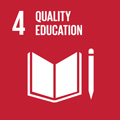- Docente: Marilisa Cortesi
- Credits: 6
- SSD: ING-INF/06
- Language: English
- Teaching Mode: In-person learning (entirely or partially)
- Campus: Cesena
- Corso: Second cycle degree programme (LM) in Biomedical Engineering (cod. 6705)
-
from Feb 17, 2026 to Jun 04, 2026
Learning outcomes
At the end of the course the student knows the operational and design principles of the instrumentation systems most commonly used in diagnostic practice. Some therapeutic applications are considered too. At the end of the class, the student knows – for each described instrumentation - the underlying physical phenomena, architecture, design issues, operational modes, aspects of interaction with the human body and patient safety. Moreover, the student is able to deal with problems related to the analysis and design of systems for diagnosis and therapy.
Course contents
Classes and features of biomedical signals
- sources and types of biomedical signals (electrical, mechanical, concentration)
- Characteristics and peculiarities of such signals (e.g., intensity, noise sources, interferences, measurement accessibility).
Sensors and instruments
- General components and characteristics of a measurement system for biomedical applications.
- Sensors for biomedical applications, key features and types (including wearables and implantables)
- Electrical circuits for biomedical applications
- Design elements of new biomedical instruments
- Interactions with the human body and safety aspects.
Acquisition and processing of biomedical signals
- Sampling, noise and analog-digital conversion
- Post acquisition processing techniques.
Examples of biomedical instrumentation. For each one, the underlying physical phenomena will be presented, together with their architecture, specific design features and operational principles.
- Biopotentials acquisition methods (EEG, ECG, EMG)
- Medical images acquisition (ultrasound, X-ray, CT and MR)
- Flux and volumes measurements (flow meter and pulmonary capacity)
- Acquisition and analysis of chemical signals and clinical laboratory instrumentation
Readings/Bibliography
The reading material provided to the students (slides and handouts) sufficiently covers all the topics of the course. These are also extensively described in the following books.
- Principles of Biomedical Instrumentation, Andrew G. Webb.Cambridge Texts in Biomedical Engineering
- Medical Instrumentation Application and Design, John G. Webster and Amit J. Nimunkar. Wiley
- Strumentazione Biomedica. Progetto e impiego dei sistemi di misura (III Edizione) Avanzolini Guido, Magosso Elisa. Pàtron Editore.
Teaching methods
Lectures aimed at presenting the courses topics and their theoretical and practical details. Examples, exercises and practical applications will also be included. A few laboratory sessions will complete the course teaching practical skills in the acquisition and analysis of biomedical signals.
Assessment methods
The final exam will comprise a group project (2-3 people) detailing the design of an instrument for the measurement of biomedical signals (or part thereof). Please contact the teacher before starting the project to verify its suitability. A final report detailing the project needs to be produced and will be discussed during an oral exam. This exam will also include questions on other topics of the course.
Teaching tools
slides, lecture notes (background and additional information), blackboard, laboratory instrumentation.
Office hours
See the website of Marilisa Cortesi
SDGs


This teaching activity contributes to the achievement of the Sustainable Development Goals of the UN 2030 Agenda.
